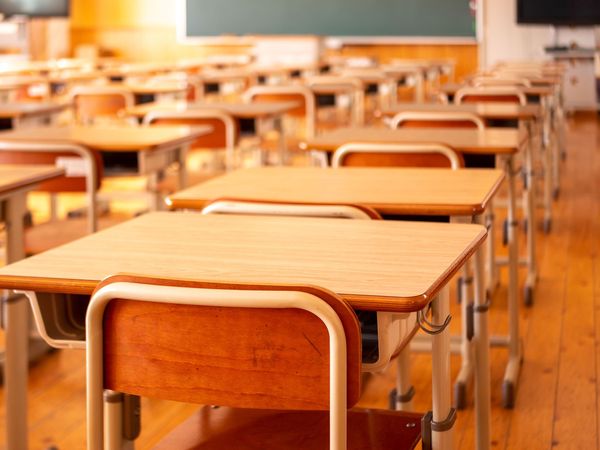Standing at Townsville Port with little more than her Italian passport in hand, a courageous young woman arrives after six weeks at sea.
Just shy of 23, Luigia de Lazzari set sail in search of a better life to escape economic troubles and a scarcity for food brought on by war.
It was 1922 and by coincidence, Luigia's future husband, Francesco Moro, was onboard the same ship.
They first met months later near Innisfail, where Luigia found work as a cook for cane-cutting gangs of which Francesco was a member.
They married on December 30, 1923 at South Johnstone, where they later bought land and established a cane farm.
100 years later
A century on, three generations of the Moro family gathered in North Queensland on what would have been Luigia's 123rd birthday.
Of their three sons and one daughter, Gary Moro, who lives in Brisbane, is the last remaining.
Trying to place himself in his parents' position is something that still brings him to tears.
"I'm very proud of the Moro name because all of these generations of us wouldn't be here otherwise," he says through tears.
"[Francesco] would say it was so lonely on the ship, but they were used to working very hard so that's what he did as soon as he arrived.
"Both of my parents worked so hard in the cane fields and it was all done by hand."
Why Italians set sail
Lured by the prospect of a new life, the migration scheme aimed at filling labour shortages in Australia's growing sugar industry saw thousands of men cutting cane by hand in the steamy plantations of North Queensland.
The tropical wet weather was a far cry from northern Italy where they would have worn coats and boots during the snowy winter months.
Luigia, the second eldest in a family of 14 siblings, was inspired to leave her life in Italy to join her brother Luigi and aunt Caterina, who had migrated to North Queensland two years earlier.
Luigia and Francesco's granddaughter Pauline Vallely has spent years researching the family's history, documenting not only their journey to Australia but the richness in stories that came with it.
"The week before they arrived, Townsville got its first lights on Flinders Street, and before that it was gas lights, so that gives you an idea of how much they didn't have," Mrs Vallely said.
A glimpse into history
Italians were among many migrants who were organised along ethnic lines, with Greek, Yugoslav and other southern European men putting their bodies on the line doing arduous work.
A news article in the local newspaper published on June 5, 1922 provided a glimpse into the energetic atmosphere at Townsville's port upon the arrival of the ship Moncalieri:
"Down at the concrete pier on Sunday morning, any man might have been excused for believing that he was in sunny Italy, instead of sunny Queensland, for far more Italian than English was being spoken."
The wave of post-war migrants changed the course of Australia forever, but as Gary Moro says, it was not an easy time for the canecutters who faced discrimination, which still holds emotional scars for many.
"Well, no-one spoke English when they arrived, so there was discrimination and they used to get all sorts of names and quite often treated badly with what jobs they were given as mostly labourers," he said.
"That's why most Italian families stayed together and they would couple all of their money to buy a farm then do that over again."
History preserved in national archives
The only physical item the Moro family has of their grandmother's voyage is her Italian passport, which is now held in the national archives collection in Brisbane.
Along with her Italian right, Luigia's passport was surrendered on arrival in Townsville to customs officers on May 20, 1922.
Inside the aged and weathered pages, the young woman's occupation is described as "contadina", meaning a female peasant farmer.
Knowing the sacrifices and hardships their grandparents went through, it's a description in which the family holds immense pride.
Mrs Vallely says like so many families living on different continents during that period, Luigia and Francesco relied on sending handwritten letters by ship to maintain communication.
Months would pass before receiving word back from Italy, which was only made worse during and after World War II.
"According to the family, letters would arrive from Italy and they would have entire lines cut out," she says.
"It was around that time in the early '50s we actually lost contact with all of that family and it was only really renewed with the inheritance of the house in 1986.
"Not only was there damage where the war occurred, but they were peasant farmers, and even though they didn't have much in the way of money, they were rich people.
"Education was incredibly important to them and we're the generation reaping the rewards of their sacrifices now.
"Celebrating Luigia and Francesco with my cousins and uncle 100 years later has been the most rewarding moment."
Retracing family history
The transfer of a deceased family estate in Italy to the Moro family in Australia in 1986 sparked the reunion for generations of family now able to understand their ancestry.
It was in fact the house Francesco was born in, along with his seven siblings.
Mrs Vallely says retracing her grandparents' footsteps has brought a sense of joy and gratitude she did not know was possible.
"To enact the estate we had to trace the family tree and have documents translated into Italian and certified at the Italian consulate in Australia, and so for the first time we had the history.
"My mother remade connections, especially with her mother, Luigia's family, and so now a number of the grandchildren, myself included, have made a number of trips back to our family.







